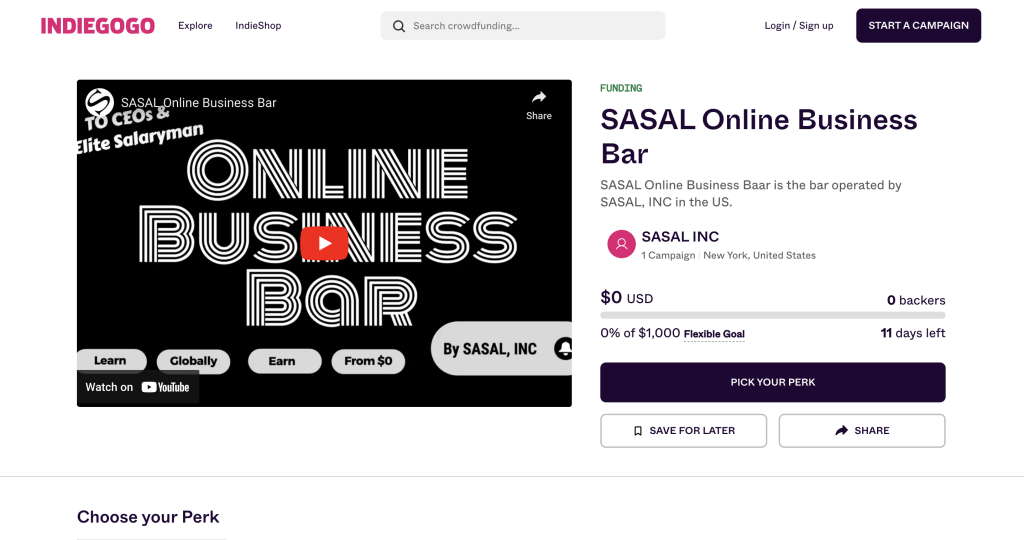- Television: Combines visuals and audio, making a strong impact on both sight and hearing. It has high immediacy and can reach a wide audience.
- Internet Media: Includes websites, news sites, and blogs. It allows for rapid information dissemination and interactive communication, with growing influence.
- Social Media: Platforms like Facebook, Twitter, Instagram, and YouTube have high information dissemination power, allowing individuals and organizations to share and spread information widely.
- Newspapers: Provide detailed information and are good at delivering local news. They are highly trusted and can significantly influence public opinion.
- Radio: An audio-only medium that is convenient to listen to while driving or working. It can deliver real-time local information.
- Magazines: Offer specialized information on specific topics and have strong appeal to target audiences. They have high visual and design impact.
- Podcasts: Provide audio content on specific topics. Listeners can consume content at their own pace, making it a powerful tool for delivering specialized information and entertainment.
- Influencer Marketing: Uses individuals with significant social media followings to spread information. Influencers have strong sway over their followers and can effectively reach specific target groups.
- Digital Signage: Uses electronic displays in public places and commercial facilities to provide information. It has a strong visual impact and can be updated in real-time.
- Email Marketing: A method of delivering information directly to target audiences via email. Personalized messages can achieve high engagement.
- Outdoor Advertising: Includes billboards, bus stop ads, and train ads. It has wide visibility, especially in urban areas, and a significant impact.
Advertisement in the New York
Components
- Voice
- Music
- Background
- Person
- Structure
- No subtitle
Creating Process
- Decide KPI
- Decide Atmosphere
- Make Narration with 5W1H
- Make Movie
- Make Animation
Creative CM Example
Advertisement KPI
CTR
The average click-through rate (CTR) can vary depending on the industry and the type of ad platform used. Here are some general benchmarks:
United States
- Google Ads: Nationally, the average CTR for Google Ads is approximately 3.17%[1].
- Facebook Ads: The average CTR is about 1.77%[2].
- LinkedIn Ads: The average CTR is around 0.49%[2].
New York
- Google Ads: The average CTR for Google Ads in New York is around 3.17%[1]. This can vary based on the specific industry and the quality of the ad campaign.
For Google Ads on YouTube, the average click-through rate (CTR) is around 0.65% both in New York and across the United States[3][4]. This means that for every 1,000 impressions, there are approximately 6.5 clicks.
References
[1] 2024 average ad click-through rates (CTRs) for paid search, display, and …
[2] What Is the Average CTR by Ad Platform for Marketing Agencies
[3] YouTube Ad Benchmarks by Industry: Measure Campaigns in 2024 – Mega Digital
[4] Google Ads Benchmarks 2024 by Industry [Original & Latest data]
Crowd Founding
Culture of the funding business donating in the US.
The culture of business donations and funding in the United States is deeply rooted in the country’s philanthropic traditions and has evolved significantly over time. Here are some key aspects of this culture:
Historical Context
Philanthropy has long been a part of American culture, with notable figures like Andrew Carnegie and John D. Rockefeller setting early examples of large-scale charitable giving. Their legacies have influenced modern corporate philanthropy, encouraging businesses to contribute to societal well-being.
Motivations for Business Donations
- Corporate Social Responsibility (CSR): Many businesses engage in philanthropy as part of their CSR strategies. This involves not only donating money but also investing in sustainable practices and community development1.
- Tax Incentives: The U.S. tax system provides incentives for charitable donations, allowing businesses to deduct contributions from their taxable income. This encourages companies to support various causes2.
- Brand Image and Reputation: Companies often donate to enhance their public image and build goodwill among consumers. Philanthropic activities can improve brand loyalty and attract customers who value corporate responsibility3.
- Employee Engagement: Businesses also use philanthropy to engage employees, fostering a sense of pride and purpose. Many companies match employee donations or organize volunteer opportunities3.
Popular Areas of Donation
- Education: Businesses frequently donate to educational institutions and programs, supporting scholarships, research, and infrastructure development1.
- Health and Human Services: Donations to healthcare organizations, hospitals, and human services are common, especially in response to crises like the COVID-19 pandemic1.
- Environmental Causes: With growing awareness of environmental issues, many companies are investing in sustainability initiatives and supporting environmental nonprofits1.
- Arts and Culture: Support for the arts, museums, and cultural institutions helps preserve cultural heritage and promote creativity1.
Trends and Innovations
- Impact Investing: Beyond traditional donations, businesses are increasingly engaging in impact investing, where they invest in projects that generate social and environmental benefits alongside financial returns3.
- Collaborative Philanthropy: Companies are partnering with other businesses, nonprofits, and government entities to amplify their impact. Collaborative efforts can address complex social issues more effectively3.
- Technology and Data: The use of technology and data analytics is transforming philanthropy, enabling businesses to track the impact of their donations and make data-driven decisions3.
Challenges
- Economic Fluctuations: Economic downturns can affect the level of corporate donations, as businesses may prioritize financial stability over philanthropic activities1.
- Measuring Impact: Assessing the true impact of donations can be challenging, and businesses are increasingly seeking ways to ensure their contributions lead to meaningful change3.
Conclusion
The culture of business donations in the U.S. is characterized by a strong tradition of giving, driven by a combination of altruistic and strategic motivations. As businesses continue to innovate and collaborate, their philanthropic efforts are likely to become even more impactful and integrated into their core operations.
Recommended Crowdfunding Platforms in the United States
When considering crowdfunding in the United States, there are several platforms that stand out due to their unique features and benefits. Here are some of the top recommendations:
- Kickstarter
- Overview: One of the largest crowdfunding platforms globally, focused on creative projects.
- Features: Uses an “all-or-nothing” funding model, meaning funds are only collected if the project meets its goal.
- Best for: Art, design, technology, games, and other creative projects.
- Indiegogo
- Overview: A popular platform similar to Kickstarter, offering flexible funding options.
- Features: Allows for “flexible funding,” meaning you can keep the funds raised even if the goal is not met.
- Best for: Technology, health, education, social causes, and more.
- GoFundMe
- Overview: Specializes in personal and community fundraising.
- Features: Ideal for urgent needs such as medical expenses, education costs, and disaster relief.
- Best for: Personal medical expenses, education costs, disaster relief, and charitable activities.
- Patreon
- Overview: A platform for creators to receive ongoing support from their fans.
- Features: Uses a subscription model, allowing creators to earn regular income.
- Best for: Artists, musicians, podcasters, YouTubers, and other content creators.
- CircleUp
- Overview: An equity crowdfunding platform for consumer goods companies.
- Features: Provides funding and networking opportunities for growing consumer goods businesses.
- Best for: Consumer goods companies and startups.
How to Choose a Crowdfunding Platform
When selecting a crowdfunding platform, consider the following points:
- Type of Project: Identify the category your project falls into and choose a platform that specializes in that area.
- Funding Goal: Check the funding model (all-or-nothing vs. flexible funding) to see which aligns with your needs.
- Fees: Compare the fees charged by each platform to ensure it fits within your budget.
- Support and Community: Consider the level of support and the activity of the community on the platform.
SASAL’s Case
Product Branding
When you would like to create your original brand, SASAL could support you.
Embroidery
Leder engraving
How to find good products for enrich your life.
SASAL Inc. sells products to enrich your life.
Identify Your Needs
Start by assessing different areas of your life where you feel improvements could be made. Consider aspects like health and wellness, productivity, and hobbies. For example, you might want to improve your sleep, reduce stress, enhance your fitness routine, stay organized, or explore new hobbies.
Research and Reviews
Once you know what you need, research products that fit those categories. Look for online reviews on websites like Amazon and Best Buy, and check expert recommendations from trusted sources. Read both positive and negative reviews to get a balanced view.
Wellness Products
Consider products that promote overall wellness. Examples include:
- Sleep Aids: Weighted blankets, white noise machines, and blackout curtains.
- Fitness Gear: Home workout equipment like resistance bands, yoga mats, and fitness trackers.
- Stress Relief: Essential oil diffusers, stress-relief coloring books, and meditation apps.
Innovative Gadgets
Technology can greatly enhance your daily life. Look for gadgets that offer convenience and solve common problems:
- Smart Home Devices: Smart speakers, smart plugs, and home security systems.
- Health Tech: Wearable devices like smartwatches and fitness trackers.
- Kitchen Gadgets: Tools like air fryers, instant pots, and high-quality blenders.
Personal Recommendations
Ask friends, family, or online communities for their favorite products. Social media platforms and forums like Reddit can be great places to find honest reviews and suggestions.
Trial and Error
Don’t be afraid to try new things. Start with highly recommended items and see how they fit into your life. If something doesn’t work out, don’t hesitate to return it or try an alternative.
Would you like recommendations for specific types of products, like wellness items or tech gadgets? Or is there a particular area of your life you’re looking to improve?
Unit price
| Intent | Platform | Cost | Information |
|---|---|---|---|
| B2C | Amazon | Basic Price for everyone | Easy to buy for everyone. |
| B2B | Alibaba | Basic Price for Corporations | Easy to buy for every corporations. |
| B2B | SASAL HP | Discount Price | – |
| B2C | Youtube | Discount Price | – |
| B2C & B2B | Client Website | Full Discount Price | – |
How to make good office design
Creating a valuable office design that enhances productivity and employee satisfaction involves several key elements. Here are some detailed steps to consider. By focusing on these elements, you can create an office environment that boosts productivity and enhances employee well-being and satisfaction.
Consideration area for good office
Flexible Workspaces
- Open Areas: Design open spaces for collaborative work and brainstorming sessions.
- Private Offices: Include private offices or quiet zones for tasks that require concentration.
- Modular Furniture: Use furniture that can be easily reconfigured to adapt to different tasks and team sizes.
- Comfortable Seating: Provide comfortable seating options in break areas to encourage relaxation.
- Amenities: Include amenities such as coffee machines, snacks, and recreational activities to help employees recharge.
- Spacious space: For one employee, it is usually recommended to go anywhere between 75 and 150 square feet per person, although anywhere up to 325 square feet is reasonable.
Natural Light and Ergonomics
- Windows and Skylights: Maximize the use of natural light by incorporating large windows and skylights.
- Ergonomic Furniture: Invest in adjustable chairs, desks, and monitor stands to ensure comfort and reduce the risk of injury.
Aesthetics
- Color Psychology: Use colors that promote productivity and well-being. For example, blue can enhance focus, while green can create a calming environment.
- Art and Decor: Incorporate artwork and decor that reflect the company’s culture and values.
- Acoustic Panels: Install acoustic panels or soundproofing materials to reduce noise levels.
- Quiet Zones: Designate specific areas as quiet zones where employees can work without distractions.
Technology Integration
- High-Speed Internet: Ensure reliable and fast internet connectivity throughout the office.
- Modern Equipment: Equip the office with the latest technology, including video conferencing tools, projectors, and smartboards.
- Tech Support: Provide easy access to technical support to quickly resolve any issues.
Health and Wellness
- Indoor Plants: Incorporate indoor plants to improve air quality and create a more pleasant environment.
- Fitness Facilities: If possible, provide access to fitness facilities or encourage physical activity through standing desks and walking meetings.
SASAL, INC’s Case
SASAL, INC., is good at the office in a casual style, using wood. Because we are focusing on the value to the clients, wood gives us the atmosphere that catches up and gives us a good idea. SASAL can handle it from the small office.






SASAL, INC’s Support
When you would like to contract with office building support, SASAL can handle it. For SASAL, INC’s service, you need to contact a counselor because SASAL is a strategy consulting firm. Please feel free to contact us.
Other Articles
Who publish the world data as a government organization?
What kinds of search engine in the world
What is the Sector?
The merit you create the brand products.
Contract
GTIN
To sell the products in the right way, you need to get GTIN. The cost of GTIN for one product is expensive in the United States. Therefore, if you would like to cut, please consider making the product abroad.
Platform
Please register on platforms like Amazon, Shopify, and others.
Trademark registration
Please register your trademark to protect it.
Make the Products
Make Basement Products
Make Products
Leather
Embroidery
Advertisement
What kinds of search engine in the world
Each search platform has its own unique strengths and user base, contributing to the overall diversity of the search engine market. The number of impressions generated by each platform reflects their reach and influence in the digital landscape. From Google’s vast global dominance to niche players like DuckDuckGo and Ecosia, each platform offers valuable opportunities for businesses and users alike.
What is a search engine
A search engine is a powerful tool that helps users find information on the internet. When you type a query into a search engine, it uses complex algorithms to scan its vast database of indexed web pages and other content. The search engine then presents a list of results that are most relevant to your query. These results can include web pages, images, videos, news articles, and more.
Popular search engines like Google, Bing, and DuckDuckGo each have their own unique methods for ranking and displaying results. They consider various factors such as the relevance of the content, the quality of the website, and the user’s location and search history.
Search engines have become an essential part of our daily lives, making it easier to access information, learn new things, and stay connected with the world.
Market Size
Google is the powerhouse of search engines, handling an astounding number of searches daily. With over 8.5 billion searches per day, this equates to approximately 255 billion searches per month. Google’s market share stands at around 92%, making it the most dominant player in the search engine market. The sheer volume of searches translates into a massive number of impressions, which include organic search results, paid advertisements, Google News, and Google Discover.
Google’s advertising platform, Google Ads, plays a significant role in generating impressions. Advertisers bid on keywords to display their ads in search results, and each time an ad is displayed, it counts as an impression. This system allows businesses to reach a vast audience, contributing to the high number of impressions on Google.
Bing
Bing, operated by Microsoft, holds a smaller but still significant share of the search market. It accounts for about 3.23% of global searches, which translates to approximately 12 billion searches per month. Bing’s integration with Microsoft products, such as Windows and Office, enhances its visibility and usage. This integration means that users often encounter Bing through default settings in these products, contributing to its overall impressions.
Bing Ads, similar to Google Ads, allows advertisers to bid on keywords and display their ads in search results. Each time an ad is shown, it counts as an impression. Bing’s audience, while smaller than Google’s, is still substantial, providing a valuable platform for advertisers.
Yahoo!
Yahoo!, powered by Bing, has a market share of around 1.16%, translating to roughly 4 billion searches per month. Yahoo! remains a notable player in the search engine market, particularly in regions where it has a strong user base. Yahoo! Search generates impressions through both organic search results and paid advertisements.
Yahoo! Gemini, the advertising platform for Yahoo!, offers native ads and search ads, contributing to the overall impressions. Native ads blend seamlessly with the content, providing a less intrusive experience for users while still generating impressions.
Baidu
Baidu is the leading search engine in China, capturing about 52.15% of the Chinese search market. With China’s vast internet user base, Baidu processes billions of searches monthly, making it a significant source of impressions in the region. Baidu’s dominance in China is comparable to Google’s global dominance, and it offers a wide range of services, including search, maps, and news.
Baidu’s advertising platform, Baidu Ads, allows businesses to reach the Chinese market through search ads, display ads, and more. Each time an ad is displayed, it counts as an impression, contributing to the high number of impressions on Baidu.
DuckDuckGo
DuckDuckGo is known for its privacy-focused approach and has been gaining popularity. It handles over 4.5 billion searches per month. While its market share is smaller compared to giants like Google, its unique selling proposition attracts a dedicated user base concerned with privacy and data security. DuckDuckGo does not track users, which appeals to those who prioritize online privacy.
DuckDuckGo generates impressions through organic search results and contextual advertisements. These ads are based on the search query rather than user data, aligning with DuckDuckGo’s privacy principles.
Yandex
Yandex is the most popular search engine in Russia, holding nearly 71% of the market share in its home country. This dominance translates to billions of searches and impressions each month within Russia. Yandex offers a variety of services similar to Google, including search, maps, and email, which helps maintain its strong presence.
Yandex.Direct, the advertising platform for Yandex, allows businesses to display ads in search results and across the Yandex network. Each ad display counts as an impression, contributing to the overall number of impressions on Yandex.
Naver
Naver is South Korea’s leading search engine, with a market share of 53.04% in the country. It processes a significant number of searches monthly, making it a key player in the South Korean market. Naver’s ecosystem includes various services like blogs, news, and shopping, which contribute to its high number of impressions.
Naver Ads, the advertising platform for Naver, offers search ads, display ads, and more. Each time an ad is displayed, it counts as an impression, adding to the overall impressions on Naver.
Ecosia
Ecosia, the search engine that plants trees, handles millions of searches each month. It has planted nearly 210 million trees to date, reflecting its growing user base and the number of impressions it generates. Ecosia’s mission-driven approach attracts environmentally conscious users who want to make a positive impact through their searches.
Ecosia generates impressions through organic search results and advertisements. The revenue from these ads is used to fund tree planting projects, aligning with Ecosia’s environmental mission.
Other Articles
Who publish the world data as a government organization?
What kinds of search engine in the world
What is the Sector?
How to collect so many people to the event
Clients are able to hold the event by using the infrastructure of the SASAL, INC. To hold the event, we need to take 2 months.
The things SASAL is able to provide.
・Advertisement(HP・SNS)
・Knowledge of the holding of the events via advisory meetings.
・One attendee from SASAL, INC, as a manager

How to hold the event.
- Please submit the event proposal using the event form.
- Reply to the feedback in the consultation meeting.
- Attracting customers
- Hold the event.
- Analysis after one month from the event.
Other Articles
Who publish the world data as a government organization?
What kinds of search engine in the world
What is the Sector?
SASAL TV Collaboration
SASAL, INC Movie
- Consultation and Listing Fees
- Studio Usage Fee
- SASAL Talent usage fee
- Editing
External Site Collaboration
- $500 / One Video

